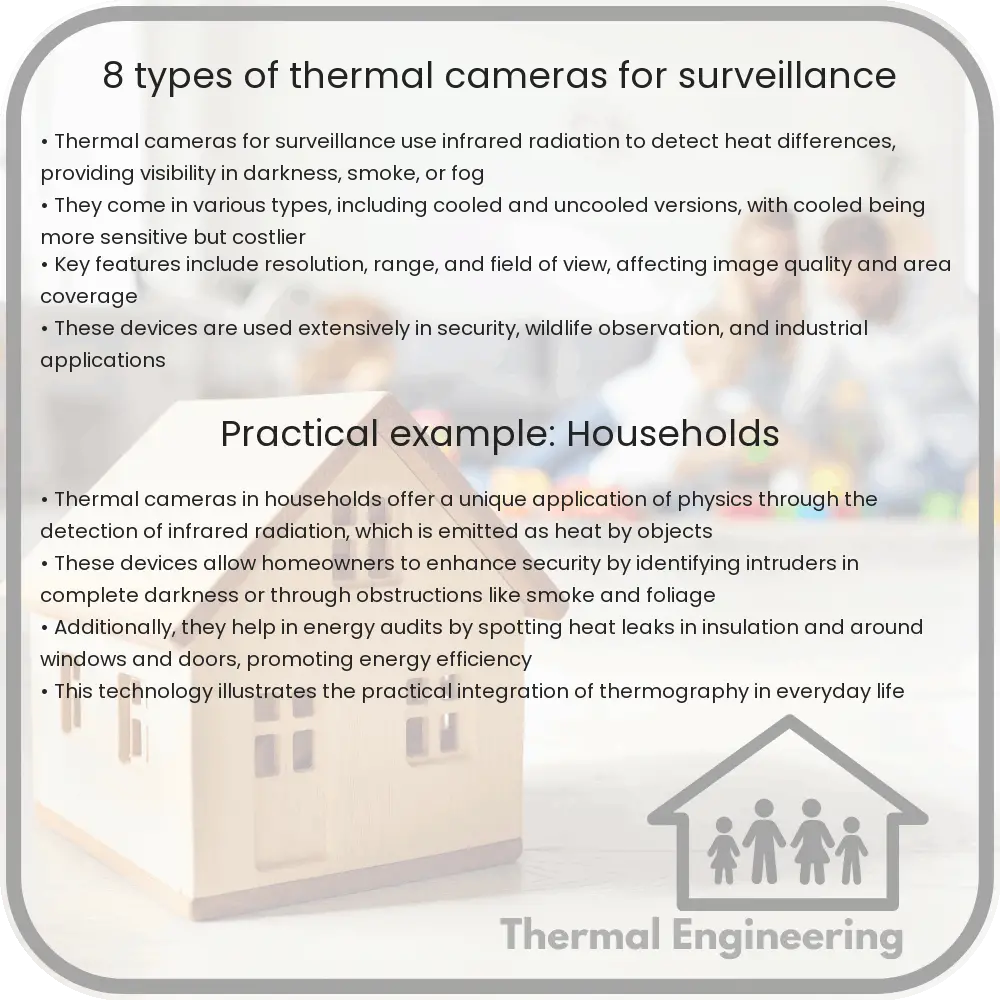Understand the diverse types of thermal cameras used in surveillance, including cooled, uncooled, and various infrared spectral bands.

8 Types of Thermal Cameras for Surveillance
Thermal cameras, also known as infrared cameras, are pivotal in the realm of surveillance, offering the capability to see and record images based on the infrared radiation emitted by objects. These devices are invaluable for security, especially in environments with poor visibility or at night. Below, we explore eight different types of thermal cameras used in surveillance, each catering to specific needs and applications.
1. Cooled Infrared Cameras
Cooled infrared cameras are equipped with a cryogenic cooler that cools the sensor to below 0°C. This drastically enhances their sensitivity to small differences in temperature. They are capable of detecting minute temperature variations as slight as 0.01°C. These cameras are particularly useful in border security and maritime surveillance where high detail is necessary.
2. Uncooled Infrared Cameras
Uncooled infrared cameras operate without specialized cooling mechanisms, making them more compact, less expensive, and easier to maintain compared to cooled infrared cameras. They function at ambient temperature and are ideal for general surveillance, law enforcement, and firefighting operations.
3. Long-Wave Infrared (LWIR) Cameras
LWIR cameras detect radiation in the long-wave spectral band of the infrared light (between 8 to 14 microns). These cameras perform well under atmospheric conditions that are typically challenging for other spectral bands, providing reliable images in fog, dust, and smoke.
4. Mid-Wave Infrared (MWIR) Cameras
MWIR cameras operate in the 3 to 5 microns range and are exceptionally sensitive to temperature differences. Often used in scientific and industrial settings, these cameras are also great for high-security installations where precision is crucial.
5. Short-Wave Infrared (SWIR) Cameras
SWIR cameras capture images in the 0.9 to 1.7 microns range. Unique among thermal cameras, SWIR can penetrate through glass and are useful in covert surveillance situations. Additionally, they offer the capability to capture images in varied lighting conditions, including at twilight or in the presence of flare-ups.
6. Dual-Band Infrared Cameras
These cameras combine features from two different infrared spectra, typically MWIR and LWIR, offering the benefits of both types in a single device. Dual-band thermal cameras are advantageous in complex surveillance scenarios where environmental conditions can change rapidly.
7. Infrared Thermal Network Cameras
These cameras are designed to be integrated into existing network infrastructures, allowing for remote monitoring over the internet. Infrared thermal network cameras are ideal for perimeter security and protecting high-value infrastructure.
8. Handheld Infrared Cameras
Handheld infrared cameras are portable and offer flexibility in operation, which is crucial in mobile surveillance, search and rescue missions, and even routine patrols. Their ease of use and portability make them a popular choice among security personnel and first responders.
Choosing the right type of thermal camera for surveillance depends on specific requirements such as the environmental conditions, the desired imaging range and detail, portability, and integration capabilities. By understanding the different types and their specific applications, users can significantly enhance their surveillance systems’ efficacy and reliability.